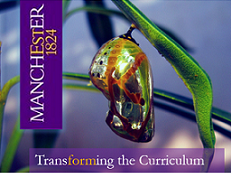Ways Of Surfacing Existing Links Between Teaching And Sustainability
The CoP meeting on the 22nd April was led by Jimmy Brannigan from NetPositiveFutures. In it we discussed ways of exploring links between what we currently do in our teaching and socio-environmental sustainability. The meeting was geared particularly towards those disciplines that have no obvious link to sustainability.

Our starting stance was that all teaching relates to sustainability on some level and it is a matter of surfacing what those relationships are. How you do that is the interesting question.
You may well need intuitive prompts that stimulate exploratory thinking around the theme. Directive prompts provide insufficient latitude for exploration while entirely open prompts may not provide the purchase points needed to move into explorations.
Jimmy uses the Triple Bottom Line model – which sees sustainability in terms of three interrelated elements: the social, the economic and the environmental – both to create space for explorations and to give concrete starting points for discussion. While the prompts are useful, the essential element is the activity and conversation that goes on around them.
Using a tabular format, people work (in groups) to prompt each other to think about the positive and negative effects of their teaching in relation to the three elements. Jimmy sees this as a staged process which begins with people describing their teaching, how it is delivered, what they wish to achieve etc.
This starting point provides an organic route into discussion of positive and negative contributions to the three elements. The idea is not to get bogged down by discussion of one element, but to create a rounded picture in respect of the three elements. The likelyhood is that some parts of the table will be fuller than others the nature of the course and people’s perceptions of it.
Perceptions of what economic, social and environmental mean will influence the picture that emerges. The economic element, for example, might be construed in terms of the economic viability of the course/module. Equally it might be understood in terms of the contributions students are likely to make to the economy etc.
The triple-bottom line has been criticised as a model because it is perceived to give the social, the economic and the environmental equal weight. This, say, the critics is obviously not the case given that a healthy economy is reliant on a healthy environment. Used at its best the triple bottom line reconciles the environmental, the social and the economic. That is to say the economic sphere is only viable when it does not significantly impact on natural systems. Conversation in a curriculum context, therefore, may well evidence tensions between the economic, social and environmental.
This becomes a starting point for thinking through ways of giving more weight to an element or reconciling the different elements. In other words it becomes the starting point for exploration of what sustainability means, what it means in different subject areas and how this can feed into potential curriculum innovation.
In this meeting we used the triple bottom line as our starting point. There are no doubt other ways of framing our explorations and sparking conversation- conversation being the essential in this activity. What other framings might be useful?

